Best Singapore City Tours with Unique Local Experiences
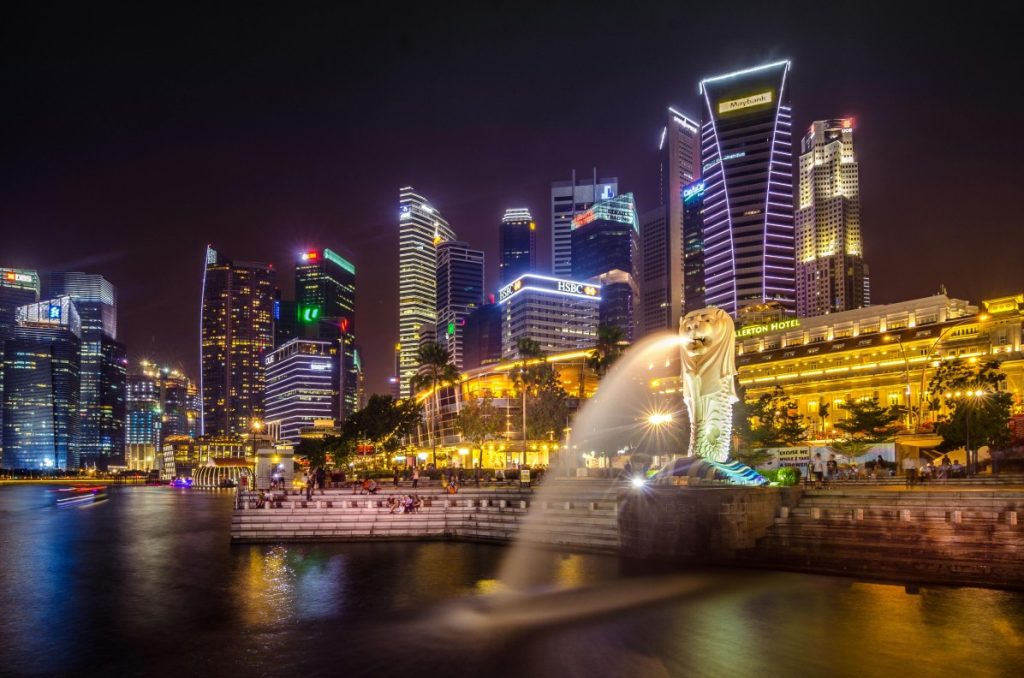
There is more to Singapore than Marina Bay Sands or Gardens by the Bay; it is a blend of culture, history, cuisine, and little-known narratives. The best way to delve into the city is to walk its streets, explore its neighborhoods, and participate in urban walks and city tours. The Tarzan Way offers curated experiences for first-time visitors that juxtapose well-known attractions with authentic interactions with the locals. Why City Tours Matter City tours are bridges to culture, history, and community. Benefits: Discover hidden gems not in guidebooks Save time with guided routes Interact with locals, taste authentic food, attend festivals Ideal for solo travelers, couples, and families who are looking to immerse themselves in Singapore vacation experiences. Types of City Tours 1. Heritage & Cultural Tours Explore Chinatown, Little India, Kampong Glam. Learn stories behind temples, markets, and family-run shops. Experience traditional food, art, and festivals. Pro Tip: Wear comfortable shoes; carry water. 2. Nature & Urban Green Tours Visit Gardens by the Bay, Singapore Botanic Gardens, Southern Ridges. Enjoy walking, hiking, panoramic views, and seasonal light festivals. Pro Tip: Bring a camera, sunscreen, and enjoy family-friendly spots. 3. Night Tours & Light Experiences Discover the city after dark: Marina Bay light show, Clarke Quay nightlife, Jewel Changi waterfall. Great for couples, photographers, and evening relaxation. 4. Culinary & Street Food Tours Must-visit hawker centers: Maxwell Food Centre, Old Airport Road, Lau Pa Sat. Sample iconic dishes like chicken rice, laksa, satay, and desserts. Pro Tip: Carry small bills, eat what locals eat, and ask about family recipes. 5. Offbeat & Thematic Experiences Hidden gems like Tiong Bahru murals, Pulau Ubin cycling, workshops (batik, Peranakan cooking). Ideal for travelers seeking authentic, local stories and hands-on experiences. Suggested Singapore 5-Day Itinerary Day 1: Marina Bay, Gardens by the Bay, river cruise Day 2: Chinatown & Little India heritage tours Day 3: Sentosa Island, Universal Studios/S.E.A. Aquarium Day 4: ArtScience Museum, Tiong Bahru cafés, Orchard Road shopping Day 5: Botanic Gardens, local cafés, Jewel Changi waterfall Pro Tip: Start early, plan around MRT routes, carry water and a camera. Best Time to Visit Jan–Mar: Pleasant, ideal for sightseeing Apr–Jun: Hot and humid; indoor attractions recommended Jul–Sep: Festival season, cultural immersion Oct–Dec: Occasional rain; Christmas lights and markets Planning around festivals enhances your Singapore trip guide experience. Where to Stay Bugis: Central, lively, MRT access Chinatown: Budget-friendly, culture-rich Clarke Quay: Nightlife and riverside dining Little India: Colorful heritage vibe Pro Tip: Stay near MRT lines for easy access to attractions. Special Experiences Romantic: Sunset cruises, rooftop dinners, spa retreats Family-Friendly: Sentosa, Night Safari, Singapore Flyer Solo Travel: Pulau Ubin cycling, hawker tours, cultural workshops Travel Tips Transport: MRT, buses; EZ-Link card recommended Apps: Grab, Google Maps for easy navigation Safety: Singapore is extremely safe Currency: SGD; small bills for hawkers Etiquette: Respect temples, avoid littering, follow local rules Shopping & Souvenirs Bugis Street: Fashion, souvenirs, quirky finds Chinatown: Crafts, snacks, home décor Little India: Textiles, spices, handcrafted items Orchard Road: Luxury and mid-range shopping Conclusion Singapore is a city filled with stories, flavors, and hidden treasures. Travelers can fully immerse themselves in the Singapore experience by participating in city tours, strolling through neighborhoods, sampling delicious street food, and attending festivals. You can visit on your own, as a couple, or with family; there is a way for everyone to create memories, immerse in culture, and enjoy local experiences that are only available in Singapore.
Top Dubai Tours: Perfect for Groups & Solo Travelers
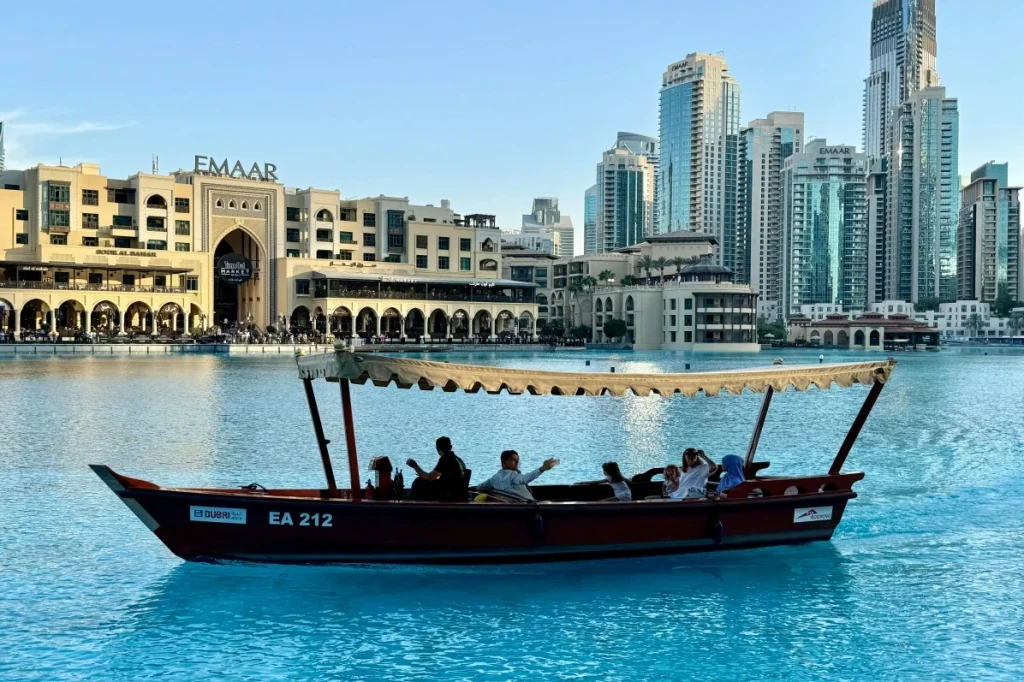
Dubai is full of contrasts — huge skyscrapers next to golden deserts; fancy resorts next to traditional bustling souks; and, on every corner, stories to uncover. Dubai has something for every traveler whether you’re traveling alone, with friends, or in a group. From adrenaline-charged activities to cultural explorations. Here is your guide to the best Dubai tours to help share ideas for your ideal trip. Planning a Dubai tour may seem overwhelming – there are so many options! The Tarzan Way has you covered. Tour itineraries designed by the experts help travelers narrow down experiences based on preferences, group size, and time pace so you can focus on memories without stress. Why Choose Dubai Tours? Exploring Dubai is more than basic sightseeing – it’s about experiencing the city more thoughtfully. Here are reasons why it’s a good idea to participate in a guided tour or follow a set itinerary: Local Knowledge: If you’re going to go on a guided tour, the tour guide is likely going to know the perfect times to see the best spots, where the hidden gem locations are. Convenience for Groups: Coordinated transport(relieving the burden of car rentals and taxis), entrance tickets, and tour guides make for a relaxing experience for all. Comfort Factor for Solo Travelers: Small group tours offer a perfect place to meet other like-minded travelers while also keeping it safe. Unique Experiences: Sometimes, a tour can include desert activities like safaris or cultural walks that can add a lot to your visit and show what to do in the tour besides dune bashing. If you like finding ways to get off the beaten path during travel, there’s a great blog about Dubai Desert Safaris – Offbeat and Unique Experiences You Can’t Miss that shares unique ideas on things to do in the desert instead of dune bashing that you’ll never forget! Top Dubai Tours for Group Travelers 1. Desert Safari Adventure A desert safari is a must-do while in Dubai — be it just a half-day ride or possibly an overnight camp, the desert is where adventure meets culture. What will you be doing: dune bashing, camel rides, standard sandboarding, and BBQ dinners under the stars, punctuated by traditional music. Pro Tip: Make sure you book for an evening — you’ll catch the dunes glowing from the sunset, and the temperature is cooler in the evening. For travelers looking for offbeat and unique experiences, combining the desert adventure with small cultural insights can be truly magical. You can even read Top Free Offbeat Things to Do in Dubai for ideas on quirky spots to explore nearby. 2. Dubai City Tour If you’re visiting the city for the first time, you definitely want to join a guided city tour. You will see all of the major sites without the stress of figuring things out based on transportation. Highlights of the tour include: Burj Khalifa, Dubai Mall, Dubai Fountain, Jumeirah Mosque, Palm Jumeirah, Atlantis The Palm. Pro Tip: If you choose a morning tour, there are usually fewer crowds. It is perfect to do the tour in the day, and then go back for the evening fountain show. Members also love this type of tour because they combine seeing the sites, and a little flexibility for shopping or photo stops. 3. Abu Dhabi Day Trip A short drive from Dubai will take you to Abu Dhabi, where you can enjoy culture and luxury beyond what Dubai has to offer. As a reminder, Abu Dhabi’s highlights include: Sheikh Zayed Grand Mosque, Louvre Abu Dhabi, Ferrari World, and Yas Marina Circuit. Pro Tip: Visiting on a midweek day is quieter and more relaxing. Usually, you can plan the wonder of a day trip to Abu Dhabi alongside your Dubai city tour as part of a larger experience of the UAE together. This arrangement tends to serve well for travelers wanting a modern city and culture. 4. Adventure & Sports Tours Dubai offers plenty for those who seek an adrenaline rush. From sky-diving over Palm Jumeirah, to jet-skiing and flyboarding, there is no shortage of excitement for every type of thrill seeker. Pro Tip: If you are traveling in the high season (Nov-Mar) to Dubai, take the opportunity to book in advance to guarantee time-slots for the best adventures at the best price. Whether you are a solo traveller or part of a group, adventure and sightseeing tours are going to be an especially engaging way to visit Dubai. Don’t forget, if you want to incorporate an ‘off the beaten path’ and experience that is a little more affordable, some experiences shared in this post from Dubai Travel on a Budget – Is It Possible? would compliment a great, fun day. 5. Cultural & Historical Tours Dubai has a rich past, and exploring it can be fascinating. Al Fahidi Historical District, Dubai Museum, Dubai Creek, Gold Souk, Spice Souk are the highlights. Pro Tip: Take a traditional abra ride across Dubai Creek — it’s a peaceful and authentic way to soak in the city’s history. For a more romantic and cultural angle, couples can also check Old Dubai’s Hidden Gems – Cultural Charms for a Romantic Getaway for ideas on scenic walks and historical spots. Best Dubai Tours for Solo Travelers 1. Walking & Food Tours Solo travelers love walking and food tours — they’re social, easy, and authentic. Highlights: Try shawarma, luqaimat, camel milk ice cream, and explore lively neighborhoods. Pro Tip: Evening tours combine food sampling with cultural insights — a great way to meet people. 2. Art & Photography Tours Dubai’s public art, skyscrapers, and street murals make it a photographer’s paradise. Highlights: Alserkal Avenue, Dubai Opera, colorful murals, futuristic architecture. Pro Tip: Early morning light is ideal for capturing the best photos. For solo travelers looking for creative inspiration, there’s a helpful guide on Dubai Dreams – Honeymoon Adventures Unveiled that also includes visual spots perfect for photography. 3. Wellness & Spa Tours Relaxation is also part of the solo travel experience
Best Time to Visit Singapore for Festivals & Events
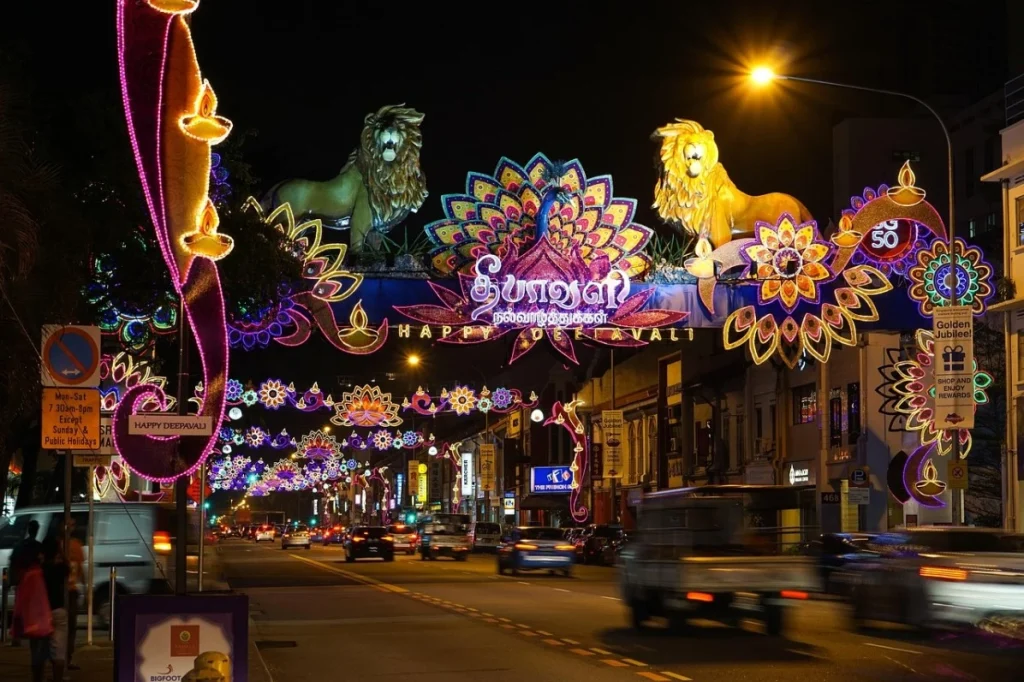
Singapore is one of those places teeming with life, with a little of everything for visitors all year round; a tiny island bursting with color, energy, and celebration every single month. From the spectacular street parades and celebratory cultural feasts to the international music festivals and mega shopping carnivals, Singapore never tires. But of course, the question travelers always want to know is — “When is the best time to visit Singapore?” The ‘best time’ will depend entirely on what kind of experience you are wanting to have. Whether that means immersing yourself in the glow of Chinese lanterns, or tasting your way through hawker stalls at the food festival, or dancing with revelers under fireworks on New Year’s Eve, we walk you through the best seasons and events that will have you planning your trip to Singapore with ease. And if planning your trip sounds like too much work, The Tarzan Way will make this effortless. It will help you build smart, experience-driven travel plans based on what you love, so you can concentrate on enjoying Singapore and not worrying about the logistics. Understanding Singapore’s Seasons Compared to many other countries of the world, Singapore does not really have four seasons; it has a tropical climate, which means it is warm and humid throughout the year. The average temperatures range between 25°C and 32°C, and it tends to rain briefly on occasion. There are two monsoon seasons: Northeast Monsoon (Dec–Mar): This typically produces more rain, and generally contains cooler winds. Southwest Monsoon (Jun–Sep): This typically produces lighter rains and breezy weeks. So, if you plan on going on a trip purely based on the weather, the best time to go out and experience all the sights is from February to April when the rain recedes, the skies clear up, and all the outdoor events commence. Pro Tip: Always take with you a random light rain jacket or umbrella — the rain can always be unpredictable, yet usually rather short-lived. You’d be surprised how many Singaporeans wait in their favorite cafés and malls to let the rain cease before making their return back outside. Major Festivals & Events Month by Month January–March: Cultural & New Year Festivities If you revel in vibrant traditions, these months are a sensory overload. The city turns into a sea of red and gold with Chinese New Year; Chinatown comes alive with lion dances, lanterns, and street food. The Chingay Parade is one of Asia’s largest street performances and takes over the city with floats, dancers, and costumes covered in sequins and electronics flashing lights. For a deeper look into a cultural experience there is Thaipusam, a Hindu festival where devotees carry ornate structures called kavadis in a spiritual act of devotion. It is often intense, spiritual and uniquely Singaporean. If you’re a first-time visitor, this period gives you a rich taste of the island’s multicultural energy. You can dive deeper into the city’s cultural neighborhoods with this detailed Singapore Travel Guide 2025 – Everything First-Time Visitors Need to Know. April–June: The Food & Shopping Lovers’ Season In April, the city exchanges the traditional festival atmosphere for a more gluttonous experience. This is the time when the Singapore Food Festival stages itself — a historic experience for any foodie. With amazing pop-up stalls, hawkers selling delicious food, Michelin-rated food events, and creative culinary learning experiences, you’ll be able to taste fare representing just about every corner of Asia, as well as the dishes you must try, such as laksa, chili crab, and satay. At the same time, The Great Singapore Sale takes over the malls and shopping districts. Orchard Road, Bugis, and Marina Bay become a shopping paradise filled with unending offers and deep discounts on luxury brands, electronics, and fashion. It’s also a great time for travelers looking for budget-friendly Singapore travel packages. You can find curated options here — Book Singapore Experiential Travel Packages Under $1000. Pro Tip: Combine the food festival with your shopping spree — hop between hawker stalls during the day and night markets for souvenirs in the evening. July–September: Music, Lights & National Pride If you would like to see the energetic side of Singapore, this is a great time to visit. In August, we have National Day, where the nation comes together in red and white with art shows, fireworks, and a sense of national pride. The celebration is in its finest form at Marina Bay with an exhilarating atmosphere. Next is the Singapore Night Festival, a creative extravaganza that transforms the Bras Basah-Bugis district into an outdoor gallery of visual art in the form of projections, performances, and immersive experiences. Also, September is when the Singapore Grand Prix happens, one of the great night races in Formula 1. Even if you are not a motor sport fan, you will love the concerts, parties, and energy of the occasion. Pro Tip: Hotels fill up quickly during the F1 season. Book early or stay in neighborhoods like Tiong Bahru or Katong for a quieter, authentic local experience. October–December: Festive Lights & Romantic Getaways This is possibly the most enchanting season of the year in Singapore. The month of October comes alive with Deepavali, where the streets of Little India are decorated with dazzling decorations, multicultural markets, and endless colorful sweet options. By November, Christmas on Orchard Street will turn the iconic boulevard into a glowing magical wonderland with lights, carols, and themed installations. Then, December will be the best month for couples, when the city is cozy and merry, and perfect for long romantic walks along the Marina Bay waterfront, or rooftop dinners with great views of the skyline. If you’re planning a couple’s escape, check out these Singapore Honeymoon Packages: Best Ideas & Itinerary for inspiration. Pro Tip: Visit during early December — you’ll catch both Deepavali lights and the Christmas charm without peak holiday crowds. Choosing the Best Time Based on Your Travel Style For Culture Seekers (Jan–Feb): Chinese New Year, Thaipusam, and Chingay Parade offer
Best Vietnam Group Tours for Young Travelers
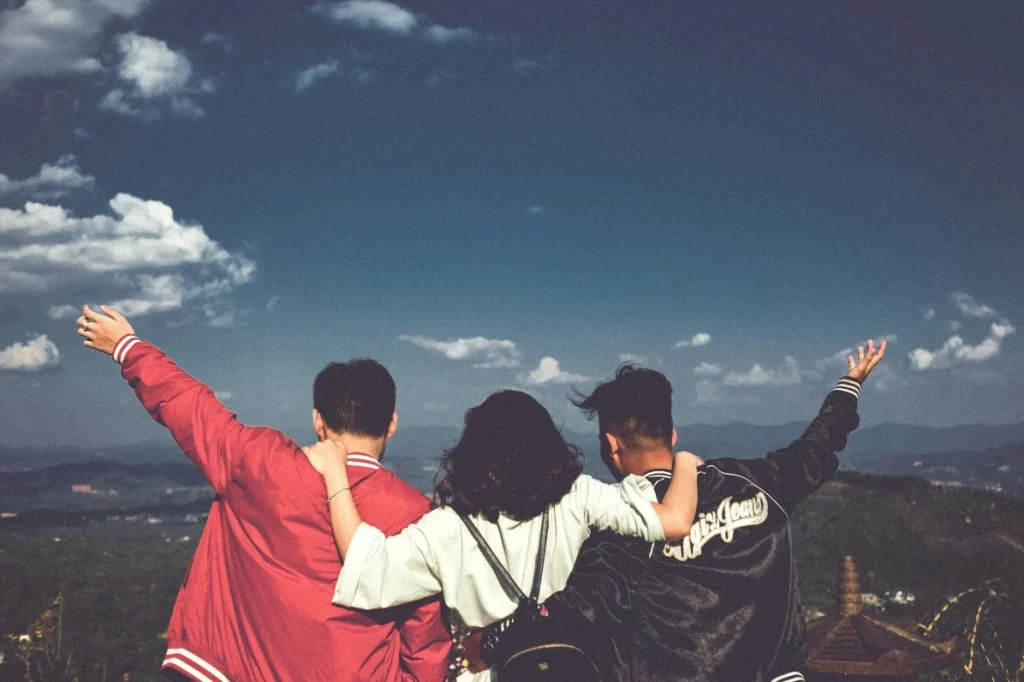
Vietnam is not just a destination – it’s a human connection experience. Between the night markets of Hanoi and the rice terraces of Sapa, there’s magic waiting to be explored at every corner of the country. And when travelers share those experiences with fellow wanderers, they become stories you will tell for the rest of your life. For youthful knowledgeable travelers who want some adventure, culture, and maybe a bit of chaos, Vietnam group tours perfectly balance independence and fun as you meet people from around the world, all there to experience the food, history, and hidden treasures that Vietnam has to offer. Whether you’re traveling alone or with some buddies, participating in a well-planned group journey means you can spare the strain of planning and get right to the fun of Vietnam – The Tarzan Way can offer simple customizable itineraries to best accommodate your vibe and budget. Why Vietnam is Perfect for Young Travelers Budget-Friendly Yet Experience-Rich You do not need a lot of money to have a pleasant visit to Vietnam. Food from street stalls can be as low as one dollar, local trains provide a great way to see scenery while also being inexpensive, and you can find hostels throughout the country that provide clean environments and a social scene for backpackers. A two-week trip to Vietnam for under $800, including accommodations, intercity travel, and tours, is easy – a small fraction of what you would spend in Europe or Japan. Vibrant Social Travel Culture Every major location in Vietnam – from Hanoi’s Old Quarter to Hoi An’s riverside bars – relies on social energy. Travelers connect over the same meals, the same hostel pub crawls, the same once-in-a-lifetime motorbike rides, and the same sleepless overnight trains. Most group tours are comprised of backpackers, students, and young professionals in the 18–35 demographic and come with built-in energy and casual atmosphere. Adventure at Every Turn Few countries present so much diversity in such a small package. You can take a trip to Ha Long Bay and cruise through limestone cliffs, trek through terraced rice fields in Sapa, explore caves in Phong Nha, and then party at the beaches in Phu Quoc – all in one trip. Top Group Tour Routes for Young Travelers 1. Northern Vietnam Explorer – Hanoi, Ninh Binh, Sapa & Ha Giang This area is the heart of Vietnam. This is the ideal destination for the adventurous types who appreciate rough nature, real culture, and scenic drives. Hanoi: Begin in the capital city among narrow streets full of scooters and food stalls. Make sure to try egg coffee and Bia Hoi nights with the locals. Ninh Binh (Tam Coc): Sometimes referred to as “Ha Long Bay on land,” Ninh Binh is a beautiful destination for boat rides through limestone karsts and golden rice fields. Sapa: Trekking through villages of different ethnic minorities such as Hmong and Red Dao; overnight homestays may provide an interesting angle to local life. Ha Giang Loop: The best motorbike trip ever! With winding roads around mountains and valleys by the Chinese border, this four-day ride may be one of the most picturesque rides in Asia. Most northern group tours last 7–10 days, offering a mix of trekking, homestays, and road trips with small, friendly groups. Pro Tip: Pack warm layers — mountain weather changes fast! Rent a motorbike with a guide for the Ha Giang Loop; it’s safer and way more fun. 2. Central Vietnam Adventure – Hue, Hoi An & Phong Nha In Central Vietnam, you’ll find ancient culture, stunning coastlines, and captivating caves. Hue: It was once an imperial capital and is home to royal tombs, temples, and the Perfume River. Hoi An: The most beautiful town in all Vietnam – famous for colorful lanterns that light the streets, many tailor shops, and restaurants along the river. Phong Nha-Ke Bang National Park: A playground for adventure seekers. Visit enormous caves like the Paradise Cave, or zipline into the Dark Cave and enjoy a mud bath inside! Most tours in the central region typically include cycling tours, caving activities, and beach parties, which can offer a nice combination of a relaxing vacation, and an adventure holiday. Pro Tip: Visit Hoi An’s Lantern Festival if your trip aligns — it’s magical. Book cave tours in advance, as Phong Nha’s adventure slots fill up quickly. 3. Southern Escape – Ho Chi Minh City, Mekong Delta & Phu Quoc The south is all about contrasts – bustling metropolises versus quiet rural areas. Ho Chi Minh City (Saigon): Experience the buzz of nightlife, rooftop bars, and historical locations like the Cu Chi Tunnels. Mekong Delta: Glide through floating markets, coconut farms, and stilt houses – the true essence of rural Vietnam. Phu Quoc Island: End your journey on the velvet beaches that rise out of the azure water. Swim, snorkel, kayak, and watch the sun drift into the ocean. Southern Vietnam group tours work for socially minded travelers focused on history and hedonism – visiting war museums during the day then going to bustling markets by night. Pro Tip: Try a night cruise on the Saigon River for skyline views. In the Mekong, start early to catch the floating markets before they close by noon. Offbeat & Themed Group Tours for the Curious Traveler Cultural Immersion Tours Live with local families in Mai Chau or Pu Luong, learn to cook pho in Hoi An, or join rice harvest festivals in the north. These tours are immersive, sustainable, and deeply meaningful. Adventure Expeditions Trek across remote highlands, camp under the stars, or kayak through Lan Ha Bay – a quieter and cleaner alternative to Ha Long Bay. Perfect for thrill-seekers. Food & Nightlife Tours From bun cha and banh mi to rooftop cocktails in Saigon, food tours in Vietnam are a sensory overload. Some tours even include cooking classes, bar crawls, and live music nights. Motorbike Road Trips The Ha Giang Loop and Hai Van Pass are legendary among bikers. Join a
Hidden Gems in Vietnam Beyond Hanoi & Ho Chi Minh
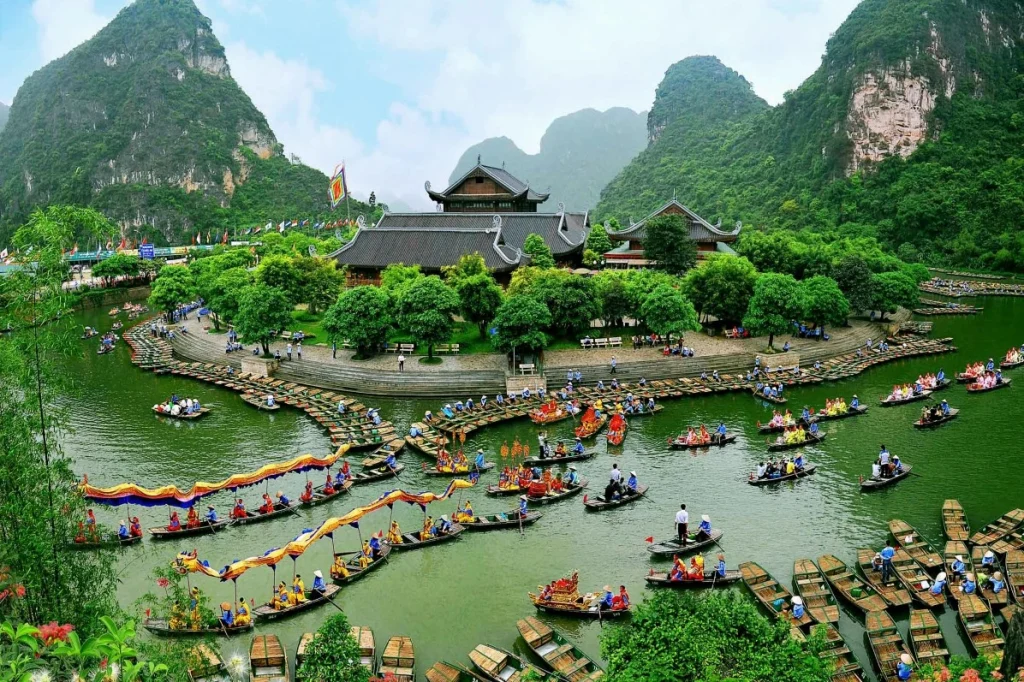
There is something wonderful about Vietnam: the smell of strong coffee in the morning, mist hovering over the green rice fields, and roads that go on forever, winding through mountains and fishing villages. Most visitors stop in Hanoi or Ho Chi Minh City. But if you dig a little deeper, you might find a version of Vietnam that seems slower, more local, and even more beautiful. If you’re planning your first trip to Vietnam and want to wander off the beaten path a bit, this guide will help you find the hidden gems across the country: the quiet towns, untouched islands, and truly soulful landscapes that somehow never make it onto a postcard. And, if you’re looking for some help creating a route that perfectly fulfills your travel style, The Tarzan Way, an AI-powered personalized Vietnam trip planner, can make that process easier. Why Go Beyond Hanoi & Ho Chi Minh? Avoid the crowds: Vietnam’s metropolitan areas are lively, but you’re able to connect with locals and experience more open space by venturing into lesser-known areas. Experience real Vietnamese life: In the countryside and on the coast, you will see ordinary life, like farmers tending to rice paddies, fishermen mending their nets, and children waving as you drive by. Find peace and beauty: You’ll then find tranquil places to explore; misty valleys, limestone mountain peaks, and wide, empty beaches without the map. Affordable exploration: Many off-the-beaten-path regions are more affordable than standard travel and more authentic by offering unique homestays or small eco-lodges. Hidden Gems to Add to Your Vietnam Travel Itinerary Each of the below destinations brings a different side of Vietnam to life – from wild mountains to untouched islands and calm lakes. Ninh Binh (Trang An & Tam Coc) Often called “Halong Bay on land,” this peaceful area offers limestone karsts rising from rice paddies. Take a sampan boat through caves and temples surrounded by calm waters. Perfect for travelers seeking slow mornings and quiet evenings in nature. Ha Giang Loop & Dong Van Plateau One of Vietnam’s most breathtaking drives, full of winding mountain roads and deep valleys. Ride or join a guided loop tour to see ethnic minority villages, local markets, and cliff-edge viewpoints. Ideal for adventure seekers planning their Vietnam travel itinerary. Phong Nha–Ke Bang National Park Home to some of the world’s largest caves, like Son Doong and Paradise Cave. Try a jungle trek, river cave exploration, or a boat ride into the dark cave systems. Great stop for travelers mixing adventure with natural wonders. Ba Be National Park A serene freshwater lake surrounded by dense jungle and waterfalls. Stay with local Tay families in stilt houses and enjoy home-cooked meals. Adds a peaceful pause to your Vietnam trip itinerary. Pu Luong Nature Reserve Think of green rice terraces, wooden bridges, and quiet trekking trails. Perfect for those who want a rural experience without tourist crowds. Great alternative to Sapa if you prefer offbeat adventures. Quy Nhon & Phu Yen Vietnam’s underrated coastal duo is known for turquoise waters and local charm. Enjoy empty beaches, fresh seafood, and hidden rock formations like Ganh Da Dia. Add them to your Vietnam travel planner if you love sea views without resort crowds. Con Dao Islands A small archipelago far from the mainland, famous for its clear waters and coral reefs. Ideal for snorkeling, diving, and quiet romantic escapes. Also holds historical significance as a former prison island – a mix of history and serenity. Ban Gioc Waterfall (Cao Bang) One of Southeast Asia’s most stunning waterfalls, right on the border with China. Surrounded by karst peaks and green valleys, it’s a photographer’s dream. Reachable by scenic routes that make for a great road trip addition. Dalat’s Countryside Trails Beyond the town center, explore coffee plantations, flower farms, and waterfalls. The cool mountain weather and pine forests make it perfect for couples or solo travelers seeking calm. Mekong Delta’s Lesser-Known Routes Skip the crowded floating markets and visit smaller provinces like Tra Vinh or Ben Tre. Take a boat through narrow canals, cycle through coconut groves, and meet Khmer communities. A gentle, cultural side of southern Vietnam. Planning Practicalities & Insider Tips Best time to visit: Overall, travel is best from November through to April when the weather is dry and pleasant. If you want more seasonal insights, refer to our Best Time to Visit Vietnam in 2025 for Travelers to work out which routes are most suitable. Transport: Domestic flights and trains are very effective for long routes, while you can rent a motorbike or use the local bus for shorter distances. Where to stay: Homestays and eco-lodges offer the most authentic, local experience as well as hospitality. Budget: Travelling in Vietnam is very manageable. Even in offbeat locations, you will find decent accommodation at a good price. Packing: Bring light clothing for the south and layers for the north. If you are travelling during the monsoon season, don’t forget to bring a rain jacket. Local etiquette: Smiling is encouraged, always remove your shoes when entering homes, and always show respect to elders. If trip planning feels overwhelming, a tailored itinerary from The Tarzan Way can simplify your route while keeping it flexible and personalized. Offbeat Vietnam Itinerary Ideas 7-Day Northern Escape Day 1–2: Hanoi arrival and day trips to Ninh Binh. Day 3–5: Explore Ha Giang Loop. Day 6: Relax in Ba Be National Park. Day 7: Return to Hanoi for departure. 10-Day Coastal Trail Day 1–2: Fly to Da Nang, visit My Son ruins or Hoi An. Day 3–5: Head to Quy Nhon and Phu Yen for quiet beaches. Day 6–8: Fly to Con Dao Islands. Day 9–10: End with a cultural evening in Ho Chi Minh City. 2-Week Explorer’s Route North: Hanoi → Ha Giang → Ba Be → Phong Nha Central & South: Dalat → Quy Nhon → Mekong Delta (Ben Tre or Tra Vinh) A perfect balance of nature, culture, and coastline. Responsible & Local Travel Support small family-run
Dubai Desert Safaris & Offbeat Experiences You Can’t Miss
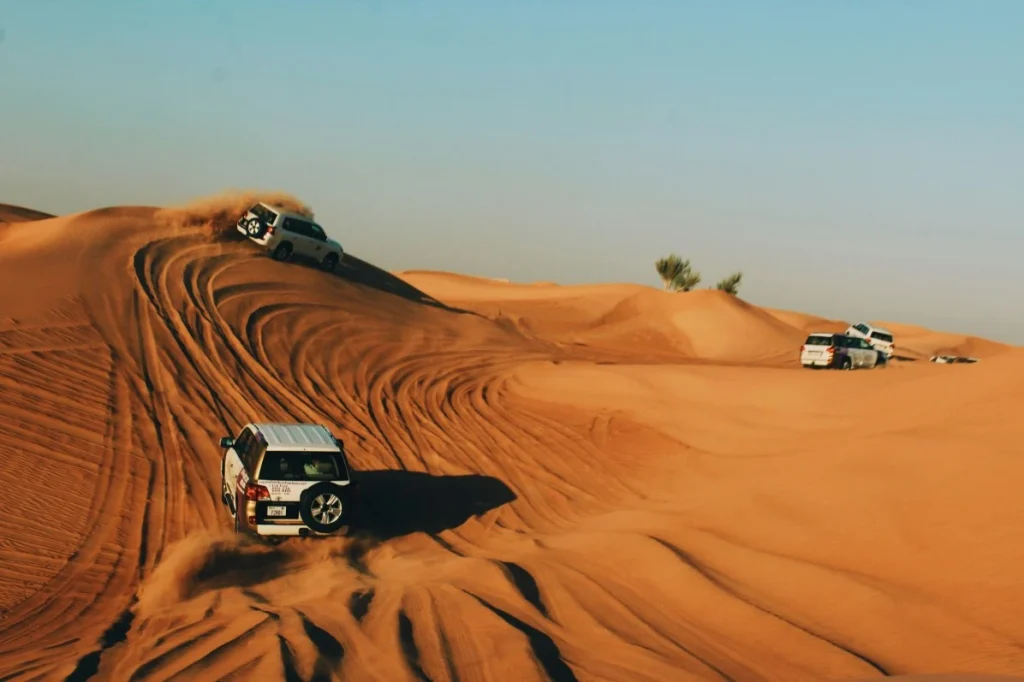
There is something magical about the desert that words cannot express—the endless golden sand dunes, the stillness of the sun sinking into the horizon, and the sparkling stars that twinkle down on you when the sun goes down. Most people think of Dubai as luxury shopping, iconic skyscrapers, and city life—but go a little further out of the city, and another world unfolds. And while dune bashing and camel rides are some of the most popular activities to do in the desert, there are other experiences you will remember long after your trip is over. If you are planning a Dubai holiday, or are simply looking for a unique way to enjoy the desert, The Tarzan Way can assist with crafting experiences based on the type of adventures you’ve always dreamed of—whether it resembles an adventure, a romantic getaway, or simply a moment to unwind and relax. Why Dubai’s Desert Is More Than Just a Safari Many people tend to believe that a desert trip in Dubai is simply a few hours of dune bashing, an obligatory camel selfie, and a quick dinner at a camp. In reality, it is an opportunity to very literally enjoy the slow passage of time, where every moment seems like a beautiful moment in cinema. Romantic Desert Moments A romantic early morning camel ride two hours before sunrise reveals soft pink and orange skies, while evenings bring golden sunsets and the whispers of Bedouin stories carried by the wind. A Space for Peace, Romance, and Adventure Dubai’s desert offers a space to find peace, celebrate romance, or seek adventure — far beyond the typical ride experience. Beyond the Usual Safari From sandboarding and falcon shows to stargazing under an infinite night sky or sharing a private dinner in the dunes, every moment adds depth to your Dubai trip itinerary. If you love uncovering hidden gems, also check our post on Top Free & Offbeat Things to Do in Dubai for ideas beyond the usual tourist trails. Top Dubai Desert Experiences Beyond the Standard Safari Here’s where your desert adventure goes from ordinary to extraordinary: 1. Sunrise & Sunset Photography Tours A photographer’s dream can be found in the desert—the early-morning and late-afternoon light turns the dunes into limitless gold, pink, and purple sand dunes that could be captured from sunrise to sunset. Many tour operators have specialized photography excursions, where you have an opportunity to take the best photos possible. Another opportunity for truly incredible images and peacefulness is through a quiet group camel adventure at dawn, which, even if it did not end with beautiful images, is often rare to find in a city. 2. Camel Trekking & Bedouin Cultural Encounters Camel rides go beyond a travel cliché—they take you back in time. Some tours take you far into the dunes to meet Bedouins, learn about traditional crafts, and enjoy stories around a fire. These cultural experiences are especially great for travelers who want to add another layer to their Dubai travel itinerary. 3. Stargazing & Nighttime Desert Magic When the sun goes down, the nighttime desert sky turns into a shimmering blanket of stars. Desert night activities include guided stargazing, private dinners under the stars, and sometimes, even overnight stays in opulent tents! The cool desert night, far away from city lights, gives a peacefulness that no other place possesses. 4. Luxury Desert Camps & Romantic Experiences Dubai’s desert camps are very romantic options for couples or honeymooners. Imagine secluded dinners, traditional singing, and comfy lounges nestled in the dunes, offering unique experiences for your Dubai tour honeymoon package. You can even combine the desert camp with hot-air balloon rides or private quad biking to create a mix of romance and adventure. 5. Adventure Sports Beyond Dune Bashing The desert can be much more than a serene landscape—there’s also adrenaline. Activities like sandboarding, quad biking, and dune buggies inject excitement into your Dubai trip. If you’re preparing a Dubai trip guide to suit both rest and adventure, these inclusions guarantee all members of your traveling group have exhilarating memories to share long into the future. Planning Your Desert Trip: Tips & Insider Advice While the desert is mesmerizing, preparation makes all the difference. Timing is everything: The cooler months (October–April) are ideal. Early morning and late afternoon offer the best light for photos. Choose Your Experience Wisely: From luxury camps to adventure sports, pick what suits your style. Clothing & Essentials: Light layers, comfortable shoes, sunblock, and water are must-haves. Nighttime can get chilly, so pack accordingly. Booking & Tour Operators: There are an abundance of tour operators, Dubai travel agents, and travel agencies in Dubai; however, for a tailored, hassle-free experience, a smart option is a personalized itinerary planner like The Tarzan Way, which suggests options curated to your desires. For budget travelers, also check Dubai Travel on a Budget – Is It Possible to learn how to enjoy desert adventures without overspending. Ample Desert & City Combined Itinerary Here’s a mix of city and desert for a balanced Dubai trip: 3-Day Quick Escape: Day 1: Arrive in Dubai, explore city highlights like the Dubai Mall and Burj Khalifa. Day 2: Morning desert camel ride, sunset photography, and luxury dinner at a desert camp. Day 3: Adventure sports (sandboarding/quad biking) followed by an evening dhow cruise. 5-Day Extended Adventure: Day 1: City exploration and cultural tours. Day 2: Desert sunrise photography and Bedouin cultural experience. Day 3: Luxury desert camp overnight with stargazing. Day 4: Explore offbeat city experiences and markets. Day 5: Relaxation, optional hot-air balloon ride, and departure. This flexible approach works for families, couples, or solo travelers and ensures your Dubai travel and tourism experience is well-rounded. FAQs 1. What are the must-try desert experiences in Dubai? Sunrise photography, camel trekking, stargazing, sandboarding, and luxury desert camps are top picks. 2. How can I plan a Dubai trip itinerary with desert adventures? Start by deciding your experience type—adventure, romance, or cultural. Then combine city highlights with desert
Goa Itinerary for 3, 5 & 7 Days: Beaches, Culture & Nightlife
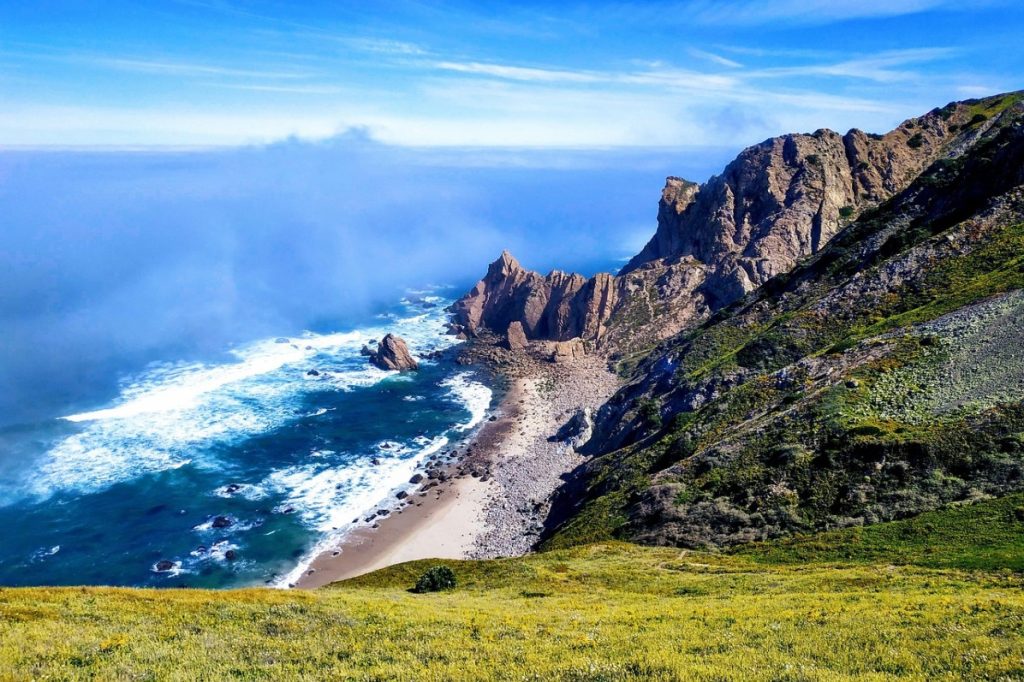
Goa has a way of attracting every kind of traveller – from party lovers to peace-and-quiet seekers. With its golden beaches, Portuguese charm, and sunny skies, each area in Goa is practically a story waiting to be told. But the big question is this – how many days do you really need in Goa? Whether you have something like a long weekend or a full week, this Goa itinerary will help you get the most out of it. To break it down – 3 days to allow for a quick escape, 5 days for a more unhurried trip, and 7 days for the full “susegad” life. 3-Day Goa Itinerary: A Short and Sweet Beach Break If you’ve only got three days, stay in North Goa. It’s lively, easy to get around, and offers the perfect mix of beaches, nightlife, and markets. Day 1: Classic Goa Start Begin at Calangute Beach, the heart of Goa tourism. Try water sports like jet skiing or parasailing at Baga Beach. Visit Anjuna Flea Market for souvenirs, boho clothes, and handmade jewelry. Dinner at Britto’s or Souza Lobo – classic beach shacks with live music. Stay overnight near Calangute for easy access to all the action. On Day 2: History & Sunsets Start your morning at Fort Aguada, one of the best Goa tourism places for panoramic sea views. Grab lunch in Candolim, then relax at SinQ Beach Club or Tito’s Lane at night. Want to know when to catch the right party crowd? Read our Best Time to Visit Goa for Parties vs Peace. And on Day 3: Cultural Goa Visit Old Goa Churches – Basilica of Bom Jesus and Se Cathedral. Stroll through Fontainhas, the Latin Quarter, filled with Portuguese-era homes and colorful streets. End your trip watching the sunset at Dona Paula Viewpoint. 5-Day Goa Itinerary: The Perfect Balance of Buzz & Bliss Five days let you enjoy both North and Central Goa – mixing beaches, heritage, and relaxation. Day 1–2: Follow the 3-day plan for North Goa On Day 3: The Cultural Loop Visit Mangueshi Temple and Reis Magos Fort – historical gems often skipped by tourists. Stop by Panjim Church for postcard-perfect photos. Enjoy Goan food at Mum’s Kitchen or Vinayak Family Restaurant. On Day 4: Secret Escapes Head to Ashwem or Morjim, some of the most peaceful family-friendly beaches in Goa. Enjoy yoga sessions or breakfast by the beach. If you prefer quiet sands, check out Best Hidden Beaches in Goa for Peaceful Escape!! And on Day 5: Old Town & Sunset Cruise Explore Panjim’s local markets – perfect for cashew nuts, spices, and handicrafts. Take an evening Mandovi River cruise for live Goan music and dinner. Stay overnight in a boutique hotel for a cozy end to your Goa trip. Want a deeper dive into Goan heritage? Don’t miss Goa Beyond Beaches: Cultural & Heritage Experiences. 7-Day Goa Itinerary: Experience Goa Like a Local A week in Goa means you can finally slow down and soak in its rhythm – from sunrise yoga to late-night laughter under palm trees. Day 1–2: North Goa Vibes Begin with Calangute, Baga, and Candolim. Indulge in water sports or cafe-hopping in Anjuna. Party at Cohiba, SinQ, or Hammerz. On Day 3: Old Goa Heritage Trail Visit the Basilica of Bom Jesus, the Se Cathedral, and the Arch of the Viceroys. Explore Fontainhas for local art galleries and quaint cafes. On Day 4–5: South Goa Serenity Drive to Colva, Agonda, and Palolem – where peace replaces the party. Try kayaking, beach yoga, or dolphin watching. South Goa Unplugged: Exploring the Quieter Side will help you pick the calmest beaches. And on Day 6: Hidden Corners & Local Eats Visit Butterfly Beach or Kakolem Beach – two hidden spots covered in Hidden Beaches in Goa Only Locals Know About. Try local delicacies – Goan fish curry, poi bread, and bebinca. Shop at Palolem Market or Mapusa Bazaar for handmade crafts. And on Day 7: Leisure & Workation Vibes Spend your last day working from a beachfront café or just relaxing. If remote work is your thing, check 13 Best Places to Have an Amazing Workation in Goa. Wrap up your trip watching the sunset at Cabo de Rama Fort. Best Places to Stay in Goa North Goa: Stay near Baga or Calangute – easy access to nightlife and beaches. South Goa: Opt for serene resorts near Agonda or Palolem. Boutique stays: Fontainhas and Panjim offer cozy colonial-style homestays. If you’re planning a workcation or longer stay, Goa packages often include hotel, bike rental, and airport transfers at great rates. Insider Tips for the Perfect Goa Trip Best time to visit Goa for tourists: November to February – ideal weather for beaches and parties. What to pack for a Goa trip: Cotton clothes, sunscreen, flip-flops, hat, and a light jacket for evenings. Getting around: Rent a scooter for flexibility. Local cuisine: Don’t miss vindaloo, xacuti, and fresh seafood thalis. Goa tourism tip: Avoid weekends for quieter beaches. Planning a larger group outing? Our Guide to Corporate Outings and Tours in India might inspire your next team trip idea. FAQs 1. How many days are ideal for a Goa trip? 5 to 7 days are perfect to enjoy both North and South Goa comfortably. 2. Which are the most family-friendly beaches in Goa? Miramar, Colva, Ashwem, and Mandrem are great for families. 3. What’s the best time to visit Goa for tourists? November to February for the best weather and beach activities. 4. Where should I stay for nightlife? Baga, Calangute, and Candolim are the best spots for nightlife and cafés. 5. What are some quiet beaches for peace lovers? Agonda, Butterfly, and Kakolem – explore them in Hidden Beaches in Goa Only Locals Know About. 6. Is South Goa worth visiting for first-timers? Absolutely – South Goa is the serene side of the state. Check South Goa Unplugged for ideas. 7. Can I plan a Goa workation? Yes! Goa has several co-working stays –
Hidden Gems and Best Beaches in the Albanian Riviera You Must Visit
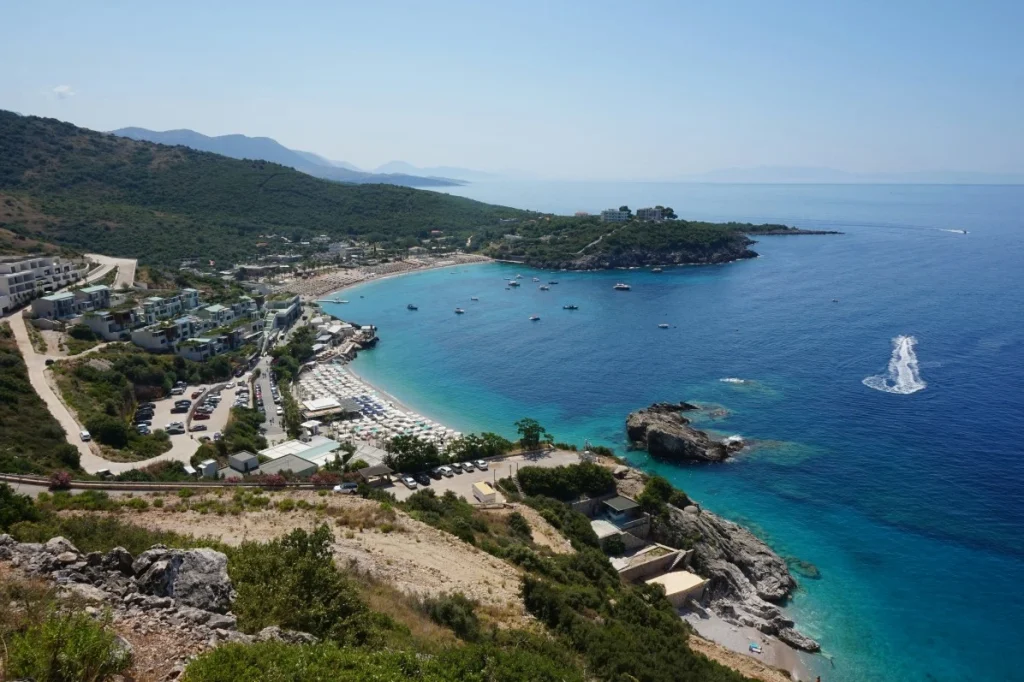
Tucked away along the Adriatic Sea lies a hidden gem – the Albanian Riviera. Unlike the more tourist-frequented beaches of Italy or Greece, this coastline feels like a dream: aquamarine waters that stretch infinitely, limestone cliffs that tumble dramatically into the sea, and sleepy villages that have somehow evaded the hustle and bustle of modernity. Imagine stepping off the winding coastal road, hearing only the lapping of the waves, and drinking a strong espresso beneath an olive tree aged at 150 years. This is what a holiday in Albania feels like – serene, authentic, and incredibly restorative. For travelers who love discovering hidden corners, The Tarzan Way, your personalized itinerary planner, can help map your journey along the Riviera, showing you spots that guidebooks often overlook. Whether you’re looking for peace and quiet, an adventure filled with history, or partying under the stars, you’re guaranteed something spectacular to latch on to and remember long after you have returned home. The Untouched Charm of the Albanian Riviera The charm of the Albanian Riviera is not only in the beauty of the views but also in the subtler rhythm of life: narrow pathways to navigate between stone homes with blue shutters, goats walk across quiet roads, and the locals greet you with a gentle nod. Villages perched on cliffs offer panoramas that make every photo look airbrushed. Beachside cafes serve coffee before conversation, making you feel part of the community instantly. The Ionian Sea shifts from turquoise to sapphire, changing its mood with the sun. Unlike the abandoned castles and ghost towns scattered across Europe, the Riviera feels alive – ancient yet thriving, timeless but welcoming. It’s a place that truly invites you to stop, breathe, and appreciate the details: a drying fishing net, a bare-footed child running down the beach, or a footpath along a cliff to an undiscovered cove. Must-Visit Stops Along the Albanian Riviera 1. Gjipe Beach – The Hidden Haven of Peace Gjipe Beach is exactly what its name promises: peace. To reach it, you hike down a steep cliffside trail, each step building anticipation for the untouched shoreline below. Arrive early in the morning to have the beach almost entirely to yourself. Smooth stones and gentle waves make it perfect for relaxing or swimming. Campers occasionally set up tents, but it never feels crowded. If you’re traveling with a dog, this is one of those rare beaches in Albania where pets are welcome – a quiet, sandy playground for four-legged companions. 2. Ancient Dhërmi – Where Time Sleeps on the Cliffs Dhërmi is a charming village that feels frozen in time. Walk its narrow stone streets covered with creeping grapevines, and you’ll see centuries-old architecture side by side with modern cafés. Hike up to the 6th-century Monastery of St. Theodore for panoramic cliff views. Explore the 4th-century BC fortress ruins and feel the weight of history under your feet. After the hike, descend to Dhërmi’s pristine beach for a well-earned swim. 3. Drymades – The Riviera’s Lively Heartbeat As the sun sets, Drymades transforms. The tranquil beach you walked along in the morning becomes a hub of energy by evening. Bonfires light up the sand, locals and travelers sway to a mix of folk and electronic music. Beach bars serve grilled seafood and local raki cocktails. Music floats over the waves, blending effortlessly with the sea breeze. While it’s not on the list of Europe’s glitziest clubs, Drymades has a charm all its own. For those planning a night out with an authentic vibe, it rivals many larger destinations. Explore our blog, Top 10 Clubs in Europe & Nightlife and How to Plan the Perfect Night Out in Europe to double your experience. 4. Ksamil Islands – Sarandë’s Secret Paradise Merely a brief boat trip from Sarandë Albania is Ksamil, a group of tiny islands that feels nearly otherworldly. The water is so clear that you can view your toes through the sand in the shallow spots, and local boats quietly move people to the three main islets: St. Nicholas, Basta, and Ksamil. Small taverns serve fresh seafood with views that steal your breath. Hidden coves offer privacy for swimming or sunbathing. Despite its popularity, it never feels overcrowded – the magic is in its secluded vibe. 5. Llogara Pass – The Scenic Gateway from Vlore to the Sea Vlore Albania serves as the gateway to the stunning Llogara Pass, a road trip dream. Winding through pine forests and climbing to 1,043 meters above sea level, every turn offers a new perspective of the Riviera below. Stop at scenic lookouts to watch the coastline stretch into the horizon. Hike through fragrant pine groves and spot golden eagles gliding overhead. Nearby, Llogara National Park is home to wild horses and over a thousand plant species. For travelers designing their Albania itinerary, combining mountains and coastline, The Tarzan Way can craft the perfect route that balances adventure and relaxation seamlessly. Local Tips for Exploring the Riviera Here’s what I’ve learned from wandering this stretch of coastline: Timing matters: Late May through early September is ideal – warm enough to swim, yet before the crowds peak. Travel slow: Don’t rush from town to town. Stay two nights in each place to truly soak it in. Road trips are gold: The SH8 coastal road is an ever-changing masterpiece of cliffs, turquoise water, and fragrant pine. Eat local: Try grilled octopus, byrek, and mountain honey – the simplest dishes taste like heaven here. Nightlife: Drymades and Dhërmi host authentic local gatherings, perfect for travelers who enjoy rhythm under the stars. FAQs About Visiting the Albanian Riviera 1. What’s the best time to visit the Albanian Riviera? Late May to early September, when the sun warms the sea and the villages are awake but not crowded. 2. How do I get to Ksamil from Sarandë or Vlore? Take the coastal SH8 road for scenic views, or hop on a local boat for a short and serene journey. 3. Are there budget options
Hidden Beaches in Goa Only Locals Know About
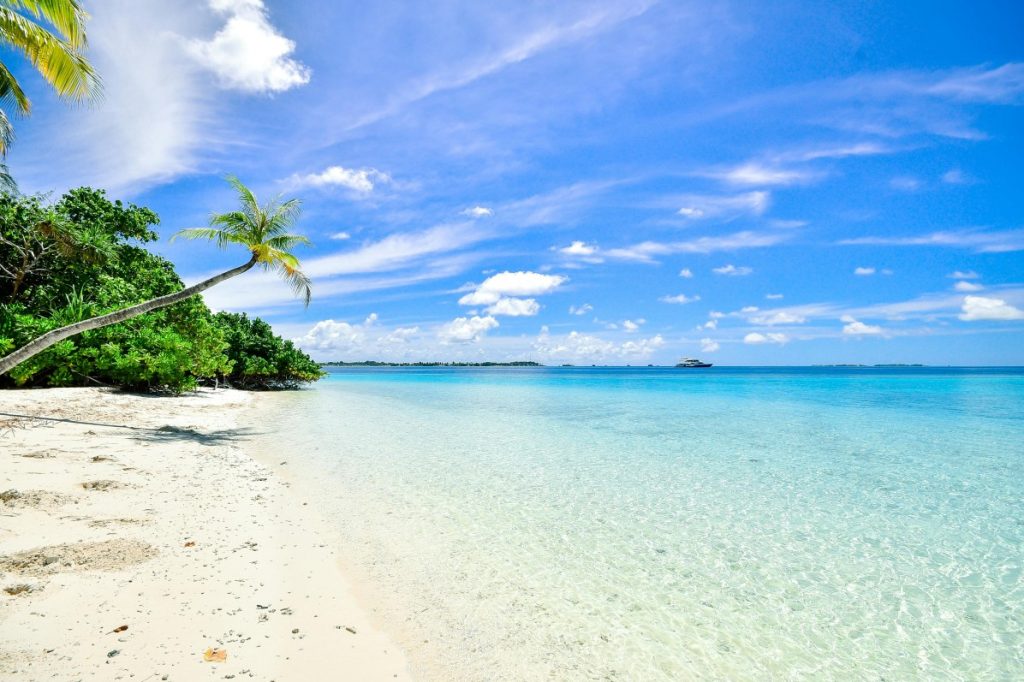
While Goa is known for its nightlife and lively beaches, ask a local, and they will share a little secret – the true Goa is found farther from the crowds. It is these locations that do not have beach shacks playing EDM music, where you can listen to the sound of the waves crashing and the wind blowing through palm trees. In this blog, we’ll explore the hidden beaches in Goa only locals know about – where peace, raw beauty, and a touch of adventure meet. Whether you’re a traveler seeking solitude, a photographer chasing unspoiled views, or someone just tired of tourist traps, this one’s for you. And if you ever feel lost while planning your route, The Tarzan Way – an AI-powered personalized travel itinerary planner – can help you discover these offbeat corners based on your interests. Why Discovering Hidden Beaches in Goa is Worth It Although Goa tourism often depicts crowded sands and party lights, the essence of the state consists of its pristine beaches. These hidden beaches in Goa are perfect for travelers who want an experience that is different from the typical tourist experience – raw landscapes, serene swimming, and authentic local life. Here’s what makes them special: Quiet & Peaceful: No tourist rush, just you and the sea. Local Culture: Small fishing villages and homestays instead of luxury resorts. Affordable: You’ll find budget-friendly hotels in North Goa nearby – often half the price of the busy areas. Eco-friendly Vibe: Less plastic, more palms, and cleaner sands. How Locals Find These Beaches Most of these secluded beaches in Goa aren’t marked on big travel maps. Locals usually get there through shortcuts – dirt roads, forest trails, or even small boat rides. Here are a few tips if you’re planning to explore: Ask a fisherman or cafe owner. They often know which paths lead to lesser-known coves. Use scooters. Narrow Goan roads are perfect for bikes. Avoid large cabs. Many roads near these beaches are too tight for cars. Travel in the dry months (Oct–Apr). Monsoons can make trails slippery. If you’re wondering exactly how to reach hidden beaches in Goa, a combination of local guidance and a bit of adventure spirit goes a long way. The Best Hidden Beaches in Goa Only Locals Know Ready to step away from the touristy sands? Here are some of the best hidden beaches in Goa – real gems that even regular visitors often miss. 1. Butterfly Beach Tucked near Palolem, Butterfly Beach is only accessible by boat or a jungle trek. Shaped like a butterfly, this cove offers turquoise water, dolphins, and sunsets worth the effort. Tip: Visit early morning for total solitude. Also check our blog Best Hidden Beaches in Goa for Peaceful Escape!! for similar offbeat gems. 2. Kakolem (Tiger Beach) Probably Goa’s most secret stretch – few tourists even know it exists. It sits near Cabo de Rama Fort and requires a short hike downhill. Once there, you’ll find golden sand and crystal-clear water. Tip: Carry water – no stalls here! If you’re into forts and history, you’ll love reading Goa Beyond Beaches: Cultural & Heritage Experiences. 3. Cola Beach Half beach, half lagoon, Cola Beach feels like two worlds meeting. You can kayak in the lagoon or just relax by the blue water. Perfect for: Couples or anyone wanting a quiet afternoon. It’s one of those family-friendly beaches in Goa that’s peaceful yet safe for kids. 4. Galgibaga Beach This one’s special – not only is it serene, but it’s also a turtle nesting site. Located in South Goa, it’s perfect for those who want to blend nature and calm. Visit between December and February for turtle sightings. Want more such peaceful southern spots? Check out South Goa Unplugged: Exploring the Quieter Side. 5. Hollant Beach Close to the airport but somehow untouched by crowds. Great for watching fishermen at sunrise and grabbing chai from roadside stalls. Fun fact: Locals call it “the sunrise beach” because the waves face east. 6. Velsao Beach A long, quiet beach south of Bogmalo – perfect for evening walks and seashell collecting. Families love it here because of the clean, shallow water. 7. Kakrajal & Arambol’s Hidden Stretch Walk a bit north of Arambol’s main beach and you’ll find quiet corners where locals chill after sunset. Yoga, drum circles, and quiet cafes – all minus the chaos. 8. Cola Backwaters & Hidden Lagoon Ideal for travelers who want to try camping on hidden beaches in Goa. Several eco-stays offer tents or bamboo huts right by the water. 9. Betul Beach Near the mouth of the Sal River, Betul is where you’ll find peace, a few fishermen, and maybe a dolphin or two. The nearby fort adds an old-world charm. Visit Betul Fort and then read Goa Beyond Beaches: Cultural & Heritage Experiences to learn more about its history. Best Time to Visit Hidden Beaches in Goa The ideal time depends on what you want: October to March: Clear skies, calm waters – perfect for swimming. April to May: Hot but great for solitude. June to September (Monsoon): Magical greenery but strong waves – not safe for swimming. If you want to decide between calm or chaos, our guide “Best Time to Visit Goa for Parties vs Peace” breaks it down beautifully. Sample 3-Day Hidden Beach Itinerary If you want to experience these without rushing, here’s a simple Goa itinerary: Day 1 – South Goa: Start at Butterfly Beach (morning boat ride) Lunch at Palolem or Agonda End at Cola Lagoon for sunset On Day 2 – Peaceful Corners: Visit Galgibaga and Betul Try yoga or kayaking near Cola Stay overnight at a local homestay or eco-hut And on Day 3 – North Goa Exploration: Ride to Arambol’s hidden stretch Stop at Velsao on the way back Wrap up with local Goan seafood at a beach shack Need more ideas? Don’t miss Top Attractions to Include in Your Goa Travel Itinerary. And if planning feels like too
Best Time to Visit Goa for Parties vs Peace
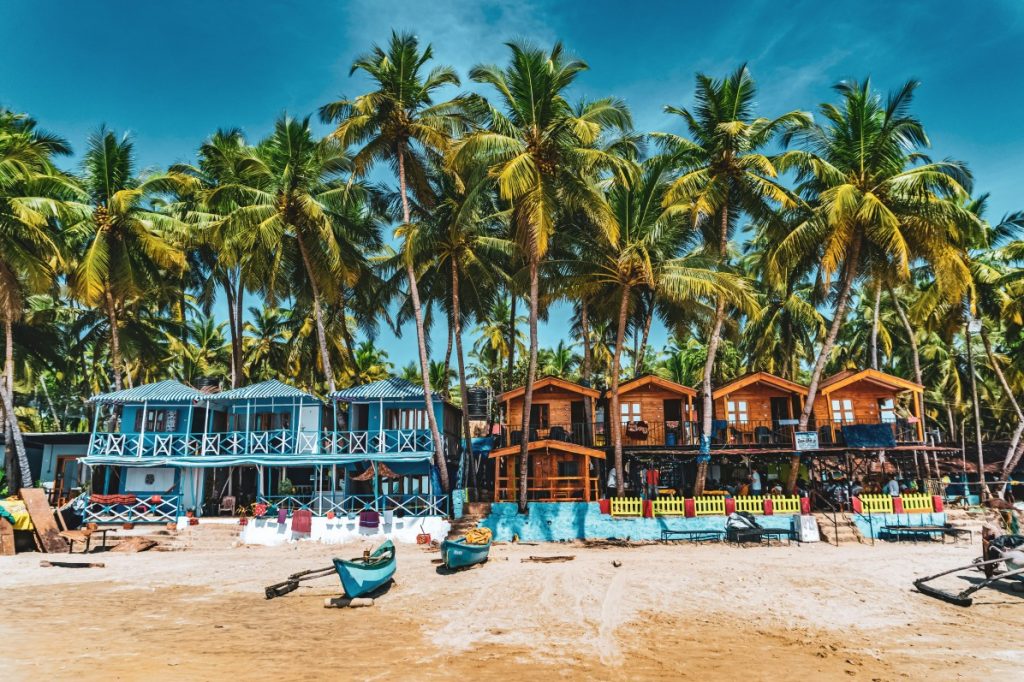
If you ask ten different travelers, “When’s the best time to visit Goa?” you’ll probably get ten different answers. For some, Goa means neon-lit beaches, buzzing nightclubs, and sunrise parties. For others, it’s sipping chai on a quiet shore, listening to waves instead of loudspeakers. The truth is – Goa has two faces. And the best time to visit depends on whether you’re chasing parties or peace. This blog will help you decide when to pack your bags for a vibrant Goa trip or a laid-back getaway. We’ll talk about seasons, experiences, stays, and even hidden gems. Along the way, I’ll also share a few insider links from other detailed guides (because Goa is too big for one blog!). And if planning feels overwhelming, you can always try The Tarzan Way, an AI-powered personalized travel itinerary planner that builds your Goa itinerary around your vibe – whether you’re a party animal or a peace-seeker. Goa for Parties – The Vibrant Side When people think of Goa tourism, the first thing that pops into mind is its electrifying nightlife. From December to January, Goa turns into a carnival of music, dance, and endless celebrations. Best time for parties: November – February December & New Year’s Eve → The most happening season, but also the most crowded and expensive. Sunburn Festival (usually in December) → Asia’s biggest electronic dance music festival. Christmas Week → Goa turns into a non-stop party zone. Must-try experiences for party lovers: Clubbing hotspots: Tito’s, Mambo’s, and LPK Waterfront. Beach parties: Anjuna, Vagator, and Baga beaches. Late-night cafes: Curlies and Shiva Valley. This is where Goa nightlife really shines. If you’re wondering about the things to do in Goa at night besides clubbing, try a night cruise on the Mandovi River or a midnight beach walk. For a detailed look at the party scene, check out our blog Goa’s Nightlife: A Guide to the Lit Nightlife. Goa for Peace – The Serene Side Now, let’s flip the coin. Beyond the rave music and crowds, Goa hides a quieter, soulful personality. If your idea of travel is watching sunsets, practicing yoga, or strolling along empty beaches, you’ll love the off-season. Best time for peace: June – September (monsoon) or October – early November Monsoons bring lush greenery, waterfalls, and far fewer tourists. October is shoulder season – less crowded, but still great weather. Where to find peace: South Goa → Palolem, Agonda, and Colva beaches are serene and less commercial. Hidden beaches → Butterfly Beach, Kakolem Beach (worth the trek!). Retreats → Yoga, meditation, and Ayurveda centers across Goa. If you’re traveling with family, you’ll love the family-friendly beaches in Goa – they’re cleaner, calmer, and safer for kids. For a deeper dive, explore our guides: Best Hidden Beaches in Goa for Peaceful Escape!! South Goa Unplugged: Exploring the Quieter Side Parties vs Peace: When Should You Go? Here’s a quick breakdown so you can match your vibe to the right season: For Parties (Peak Season: Nov–Feb): Bustling nightlife International tourists Higher prices for flights & stays Packed beaches For Peace (Monsoon & Shoulder Season): Quiet beaches and roads Lush green landscapes Affordable stays Perfect for slow travelers & families If you’re building a Goa itinerary, think about what matters more to you: dancing till dawn or waking up to the sound of waves with no one around. Our guide Top Attractions to Include in Your Goa Travel Itinerary can help you mix both worlds. Where to Stay – Party vs Peace The type of accommodation you choose will also depend on your vibe. For Party Lovers: Beachfront resorts in North Goa → Perfect for quick access to clubs and bars. Party hostels → Zostel, The Bucket List Hostel, and other backpacker hostels keep the fun going. Luxury villas → If you’re with a group, renting a villa near Baga or Anjuna keeps you close to the nightlife. For Peace Seekers: Budget-friendly hotels in North Goa → Tucked away from crowds but still accessible. South Goa resorts → More private, surrounded by nature. Heritage stays → Portuguese-style villas or boutique homestays. Whether you’re eyeing Goa resorts for a luxurious vibe or cozy Goa hotels for affordability, Goa has it all. Curious about combining work and leisure? Check out 13 Best Places to Have an Amazing Workation in Goa. Planning Your Goa Trip Now, here’s the tricky part – planning. Should you go for Goa packages or build your own? Packages are convenient, but they often stick to touristy spots. If you prefer something unique, creating your own itinerary might be better. That’s where The Tarzan Way can help again. It’s designed to personalize your Goa trip – whether you want bar-hopping nights or lazy beach mornings. (And yes, it saves you from endlessly scrolling Google Maps!). FAQs 1. What is the best time to visit Goa for nightlife? The peak season from November to February is best for experiencing Goa nightlife, especially December during Christmas and New Year. 2. Which season is best for a peaceful Goa trip? The monsoon (June–September) and shoulder season (October) are perfect for peaceful, crowd-free travel. 3. Are there budget-friendly hotels in North Goa near the beach? Yes, North Goa has plenty of budget-friendly hotels close to beaches like Anjuna, Vagator, and Morjim. 4. What are the top things to do in Goa at night apart from clubs? Try night markets, beach bonfires, midnight cruises, and live music events for non-clubbing fun. 5. Which are the best family-friendly beaches in Goa? Palolem, Agonda, and Colva beaches in South Goa are family-friendly and safer for kids. 6. Should I book Goa packages or plan my own trip? Packages are good for convenience, but planning your own gives more flexibility and lets you discover offbeat places. 7. How many days are enough for a Goa itinerary? A 4–5 day Goa itinerary is ideal for exploring both North and South Goa comfortably. 8. What is cheaper: staying in Goa hotels or Goa resorts? Goa hotels are



